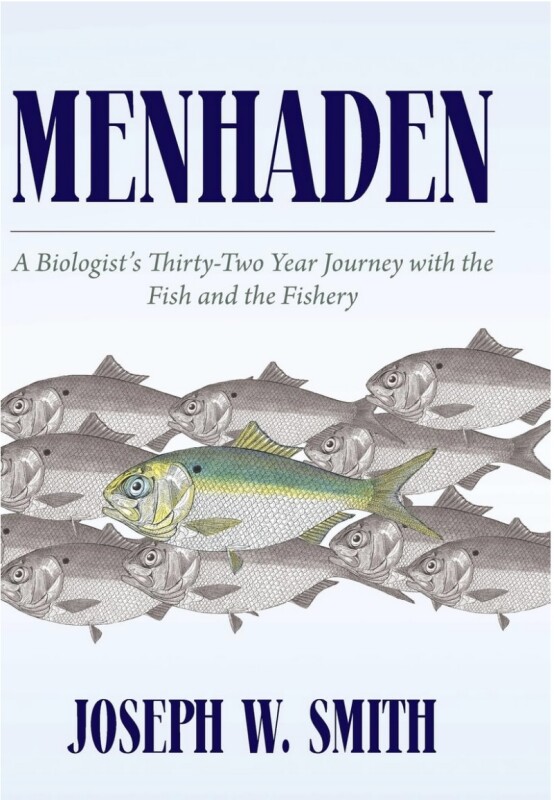Joe Smith’s new book, Menhaden: A Biologist’s Thirty-Two Year Journey with the Fish and Fishery, covers everything from the origins of what in the 1970s and ‘80s was the largest volume fishery in the U.S., to the current state of the Atlantic menhaden fishery.
Like so many people’s relationships with fish, Smith's connection to menhaden began early. In the introduction to his book, he recounts how as a child visiting the Jersey Shore his family took him out crabbing in the bay near West Wildwood, and he used “bunker” for bait.
“My cousin informed me that it was a menhaden…Once secured with twine in the crab trap, it obscured most of the base of the device,” Smith writes. “Upon returning home that evening, I went to my trusty Dr. Zim’s Golden Guide of Fishes, to learn more of this bunker fish.”
Learning more about menhaden became his life’s work as a National Marine Fisheries Service (NMFS) biologist at the agency’s Beaufort Lab in North Carolina. In his book, Smith has compiled a richly detailed history of the fish and fishery, what aspects were studied and how they were studied. The book includes numerous historical photos and graphs that help illustrate the science. Smith’s inclusion of a bibliography at the end of each chapter, and his explanations of the jargon of the fishery and its idiosyncrasies, such as the way the fish are handled and weighed, will be a boon to future students of fisheries science.
“I kept a pretty good weekly journal while employed at the Beaufort Lab,” says Smith. “I saved a couple of file cabinet drawers of annual notes, newspaper clippings, journal articles, etc. During the last few years of employment with the NMFS, I decided I wanted to tell my story of involvement with the menhaden fishery, as there is a great deal of misinformation about the fishery out there.”
While much of Smith’s book can be classified as a data-rich monograph aimed at providing readers with reliable information, there are other sections in which he uses a narrative style to offer personal anecdotes and describe how menhaden fit in the coastal ecologies along their extensive range from New England to Texas.
The chapter on birds and menhaden, for example, begins with a humorous recollection of fishing with his daughter and chasing imaginary birds, from which Smith segues into animated descriptions of how ospreys, gannets, pelicans, and other birds hunt for and rely on menhaden. In the case of the osprey, Smith notes that in Chesapeake Bay, the bird’s reproductive success and the availability of menhaden are closely linked.
Smith goes on to discuss the importance of menhaden to the tuna fishery, and he postulates that low numbers of menhaden can be correlated to increased shark attacks in the Carolinas.
It is safe to say that Smith wrote his book just in time. Since his departure from NMFS, the agency ended its menhaden program, and more recent cuts by the Trump administration will mean the kind of information in Smith’s book will be collected with less detail, if at all.







